New issues with Vacumm and the IWE and Actuator
Hello everyone. I am posting to my old thread with a new issue regarding the IWE, Actuator and Vacumm. I have not seen or heard of anyone having the problem that I have run into and finally succeded in solving after a few weeks of removing and replacing parts on my 2010 Raptor.
I wrote the thread a while back but wanted to expand on it after my resent experience. I kept hearing a sound that was unlike the one that I originally heard a couple of years ago when I discovered the actuator will try to engage 4 wheel drive when you loose vacuum to the actuator while driving. It causes different noises and that is what threw me off. Mine sounded like having playing cards in the spokes of a bicycle wheel or a cat purring loudly. I also noticed that my truck was pulling to the right a little yet I knew it was aligned correctly and all the tires had the same air in them. I decided with 71K miles that I should go ahead and change the hubs on the front. So with this thread I am running through the IWE system with the actuators and how it all works. I have seen many people asking how this works and if it could be their problem. I will say that in my humble opinion that the way ford has designed their 4 wheel drive system with the IWE and Vacuum actuated parts is absurd but I also see how Ford Dealers make a lot of money for something that is so simple to diagnose once you know how the entire system works.
I will start out with what the Hub and Actuator looks like. Now remember the previous story here all ready tells you how the Vacuum lines work but his tells you what the Vacuum lines run to regarding parts and how they connect together to make the truck run in 4 wheel drive.
1. Hub. front with the wheel lugs attached and the ABS sensor line attached.
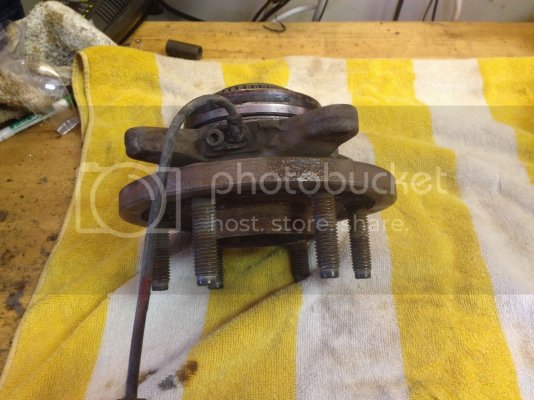
2. Rear of hub and gear that drives the front wheel that the Vacuum actuator connects to when there is no vacuum to the line. Notice the shiny areas on the outer teeth of the gear on the hub. That is wear. Those gears are suppose to be straight cut. Not beveled on the ends.
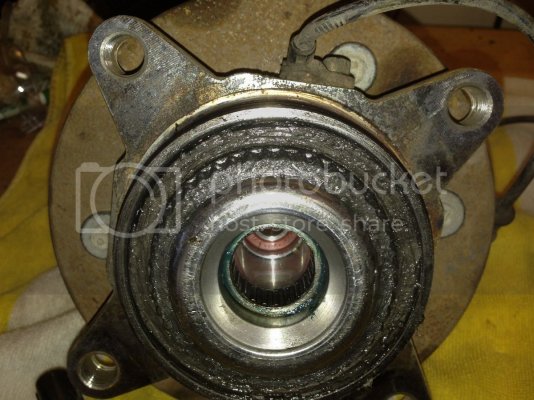
In the pictures I am using the old parts so that you can see where the wear takes place when the Actuator does not engage completely. This can be caused by a cracked Vacuum line or trying to switch into 4 wheel drive at to high a speed. These are what causes the loud bang or pop that you hear when it does not completely engage and then pops away from the gear with big bang.
3. Hub Actuator with gear that attaches to Hub gear that drives the wheel. This is what moves in and out with Vacuum to engage 4 wheel drive when you flip the dash switch. In 4 wheel drive it stops the vacuum to the actuator which then lets the vacuum be removed to let the gears connect to each other.
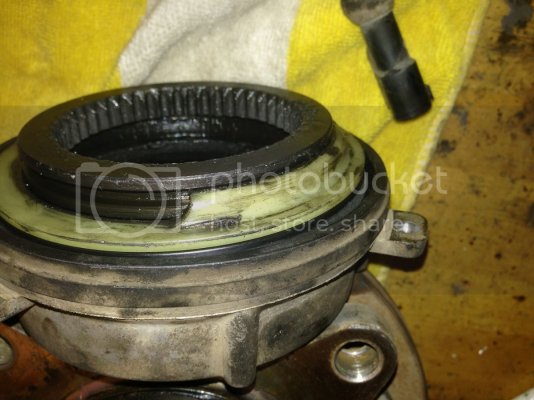
notice the wear on the gear teeth. This is caused again by the gear rubbing on the hub gear.
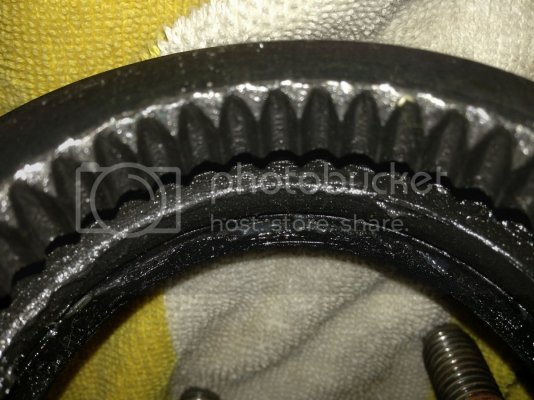
4 This is how the two piece work together.
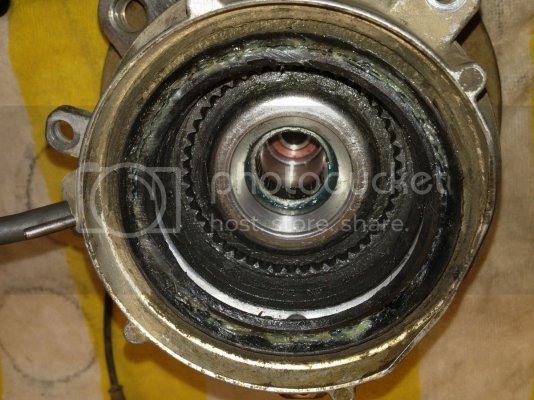
Picture the steering knuckle fitting between the hub and the actuator. The next pictures I have a vacuum pump attached to simulate what the actuator does when the dash switch is turned on and off.
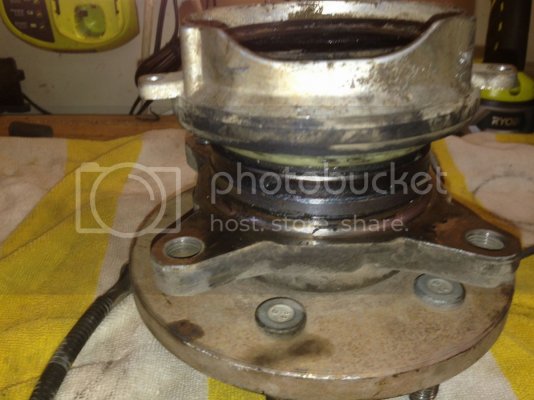
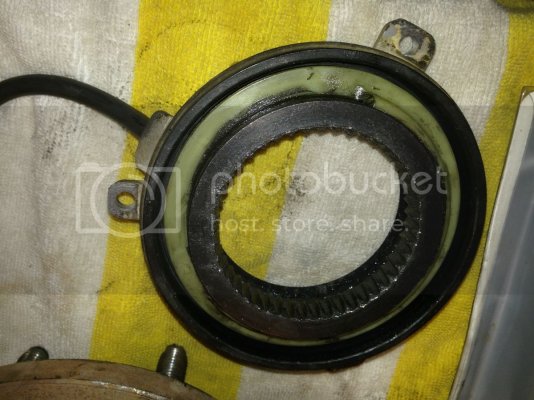
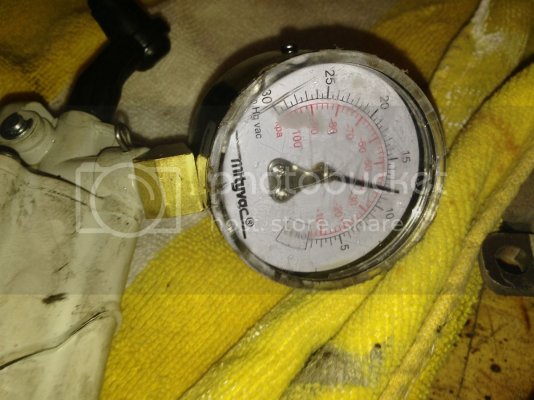
This what they look like when they are attached to each other to drive the front wheel.
The following pictures are maybe hard to see or understand but I was trying to show how the Acutator will move in and out to make the engaged wheel to turn.
This would be if the actuator was engaged.
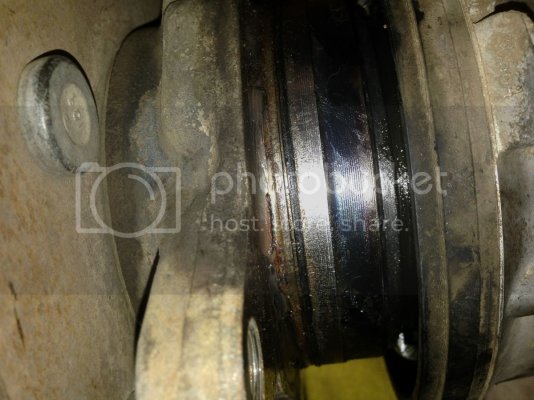
This would be if it had the vacuum to the actuator and would be disengaged from the hub. you can also see the damage that was done to the hub because it was not totally engaging with the actuator because of the vacuum issue over time.
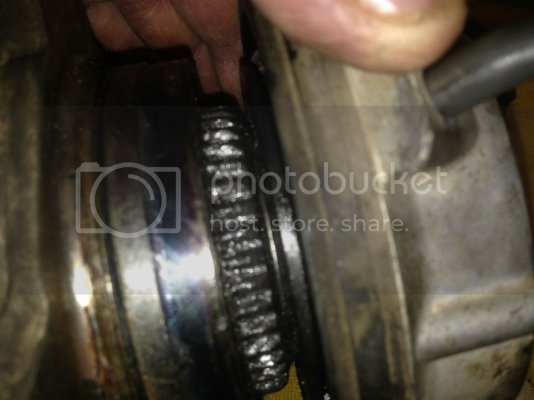
Now that you hopefully understand how the IWE works, you may be able to understand how important it is that your vacuum lines don't leak or break. If they crack then the actuator is just getting enough to cause the gears to rub together without connecting causeing the noises we hear. It is better if the vacuum line would just break competely because the IWE is designed to default into connecting the Actuator and the Hub together. It will cause the axles to engage but unless you have the transfer case switched to 4 wheel drive it will not hurt anything.
Here is what happened to mine to cause me to have to take it all apart and per Murphy's Law, it was of course the last part of the work that I did to find the problem.
I removed the passenger side hub. I could see by my vacuum pump that the actuator gear was moving out solidly but when I removed the vacuum the gear would not return into the diaphragm like it is designed to do. And it seemed very loose. But it would sometimes recess back in causing my confusion. I knew something weird was going on so I removed the steering knuckle to find out what was going on.
What's wrong with this picture?
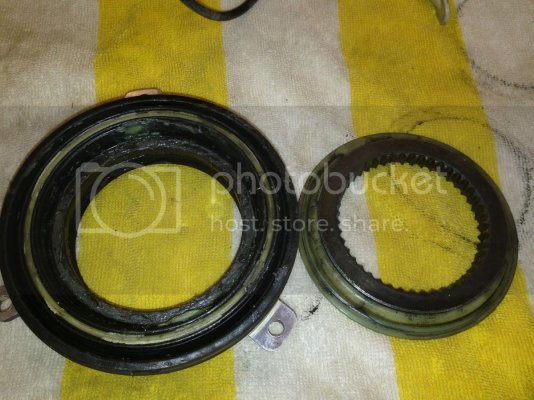
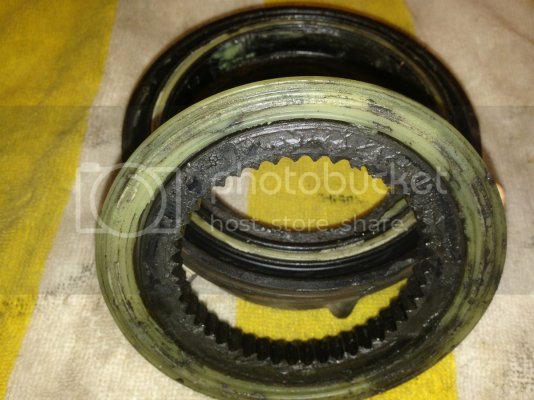
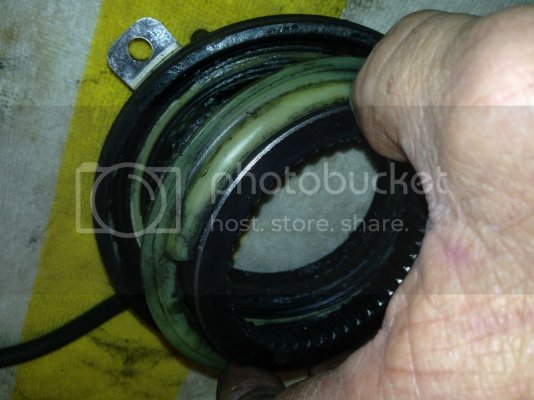
The gear broke off of the diaphragm keeping the diaphragm in tack allowing the vacuum to operate correctly but the gear itself could not do it's job. It would engage but it would back away when the truck was running or it would be engaged because the diaphragm would push it to engage if there was no vacuum. I installed a new actuator with a new hub and voila it works like it should. The driver side also received the same treatment prior to my discovery so I am running all fresh IWE's up front with the vacuum system that I altered per the first part of this thread.
I hope this helps people to understand how the system works now and the weak points and vulnerability to a non working 4 wheel drive system on your truck should this happen. I believe Ford is fully aware of this weakness but keeps it because of the lack of knowledge by owners to how the system works. It's easy to repair with new parts that are really not that expensive if you search out discount parts but the labor can be the killer if you have a problem like I did. I think it is easy for a dealer to just chase parts down and replace them when they probably already know what the problem is. To replace what I replaced with OEM parts and labor at a dealer I would say would be in the neighborhood of $2000.
I hope this helps someone.















